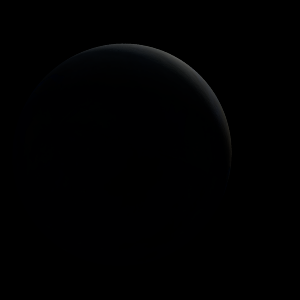|
|
Space Astro
|
Info for exoplanet "Orovy"
| Scientific (actual) data |
|---|
| Planet | HD 126614 A b |
| Planet status | Confirmed |
| Mass sini | 0.38 |
| Orbital period | 1244 |
| Semi major axis | 2.35 |
| Orbit eccentricity | 0.41 |
| Angular distance | 0.032459 |
| Discovered | 2010 |
| Updated | 2019-12-13 |
| Omega | 243 |
| Tperi | 2453810 |
| Publication | Published in a refereed paper |
| Detection type | Radial Velocity |
| Alternate names | HD 126614 b |
| Star name | HD 126614 A |
| Right ascension | 216.7° |
| Declination | -5.18° |
| Mag v | 8.81 |
| Star distance | 72.4 |
| Star metallicity | 0.56 |
| Star mass | 1.145 |
| Star radius | 1.09 |
| Star sp type | K0 |
| Star age | 7.2 |
| Star temperature | 5585 |
| Star alternate names | HD 126614 |
| Wikipedia article | HD 126614 A b |
Back
| |
| Fictional info (?) |
|---|
| Suggested name | Orovy |
| Planet type | Cold planet |
| It is the second-brightest natural object in the night sky after Awuraru-to, reaching an apparent magnitude of -5 - bright enough to cast shadows at night and, rarely, visible to the naked eye in broad daylight.
This planet is named after the deity Orovy, the bringer of nature.
As one of the brightest objects in the sky, Orovy has been a major inspiration in native culture for as long as records have existed.
Two of Orovy's moons, Erino Xuveka and Qynis Evenyq, are are quite unusually shaped.
Like some of the other cold planets, Orovy has a ring system, a magnetosphere, and numerous moons, Erino Xuveka being the most visible one. |
| Atmosphere | Carbonyl sulfide | 99% |
| 2H2O | 0.00014% |
| Atmospheric pressure | 3 bar |
 |
| Moon | Erino Xuveka | Very small round oceanic planetoid |
| Qynis Evenyq | Very small almost round gaseous moon |
| Ujur-owes Ez | Medium-sized round crater-filled moon |
| Ygux-uvog Ohe | Very small potato shaped crater-filled asteroid |
| Ukito'kored | Huge round rocky moon |
| Google search for Orovy |
|
Website by Joachim Michaelis
|
|
|
|